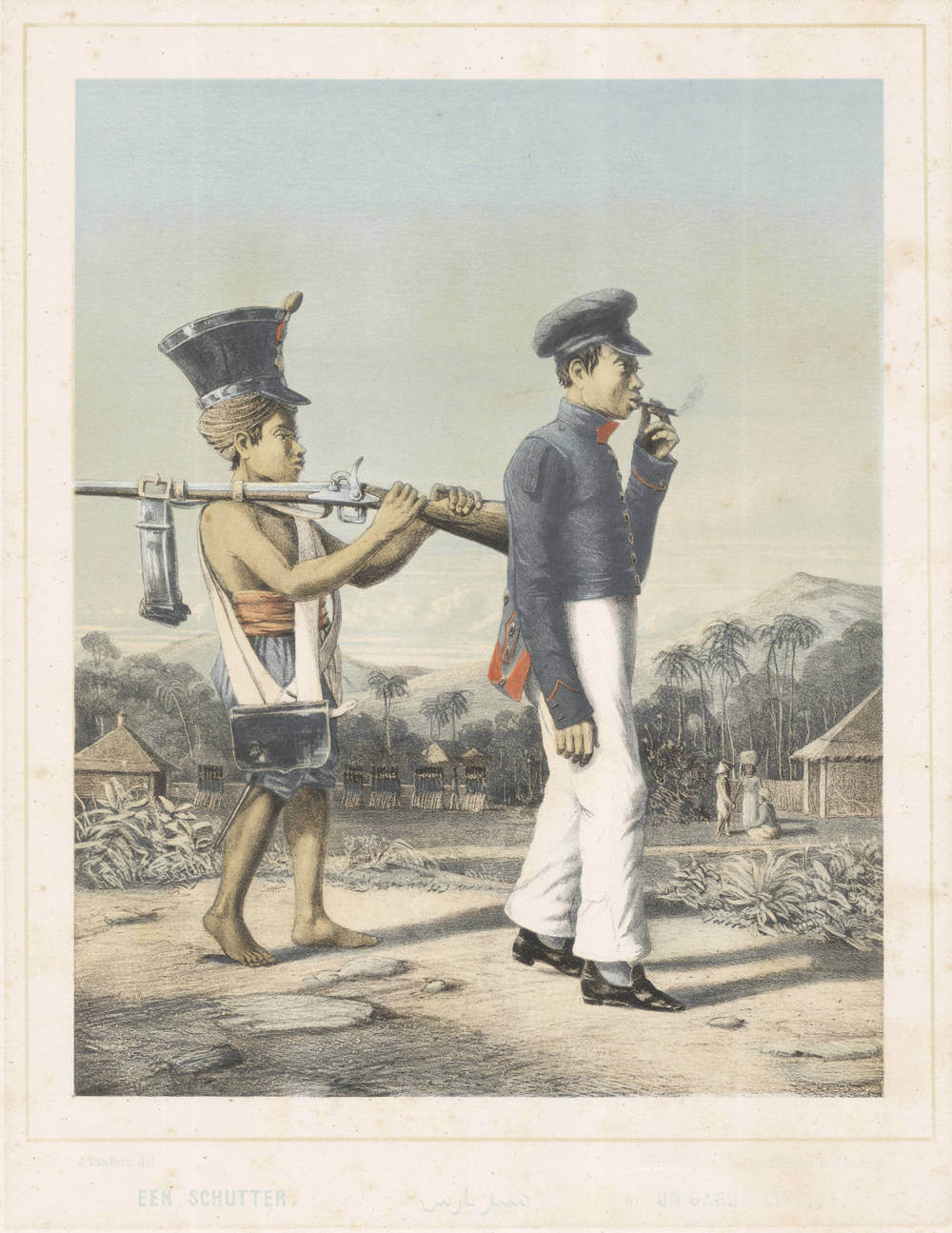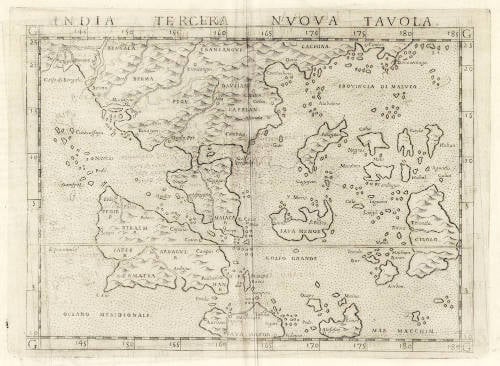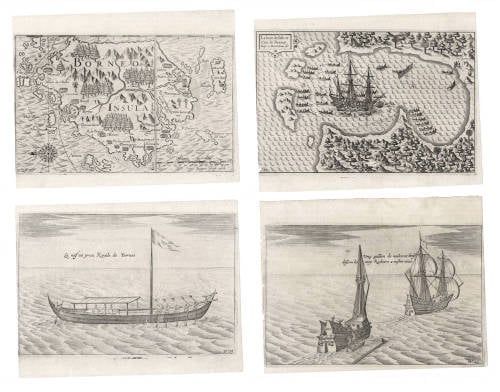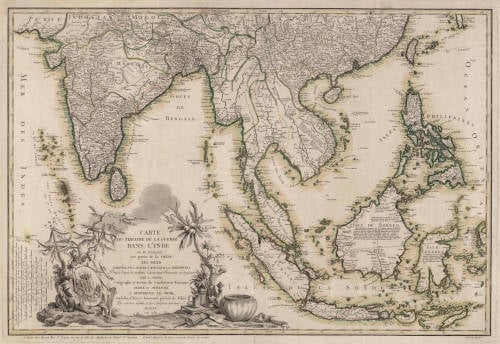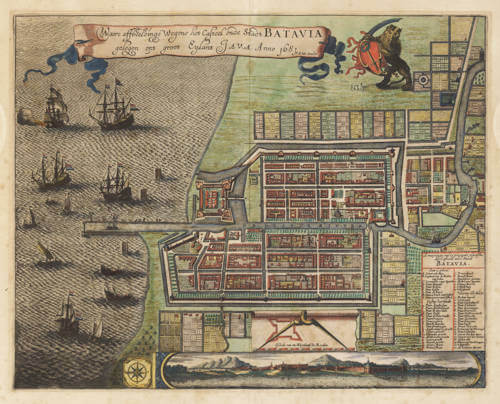Leen Helmink Antique Maps
"Easily the best 19th century print of Indonesia"
Stock number: 19503
Zoom ImageCartographer(s)
Title
Een Schutter
First Published
Batavia/The Hague, 1853
Size
52.3 x 34.5 cms
Technique
Condition
excellent
Price
$ 7,500.00
(Convert price to other currencies)
Description
The best and most sought-after nineteenth century print of Indonesia.
The print is used as cover illustration for Bastin and Brommer's reference book on 19th century illustrations of Dutch Indonesia.
From Nederlandsch Oost-Indische typen, after a drawing by Auguste van Pers (1815-1871), a Dutch artist who spent most of his life in the East Indies. In all likelyhood, van Pers designed this drawing in close cooperation with French artist Ernest Hardouin. The print was published in lithograph by C.W. Mieling.
Rarity
Of utmost rarity. The last copy in auction was Christie's 2005, almost twenty years ago. No copy in Rijksmuseum. No copy in Indonesia. No copy in Australia.
Nineteenth Century Prints and Illustrated Books of Indonesia
"and the most brilliantly witty of all nineteenth century prints of Indonesa, De Schutter, the pencil and chalk tracing of which is in the collection of the Tropenmuseum, Amsterdam."
"De Schutter is easily the most successful and popular plate."
(Bastin and Brommer)
Transcription and translation of the Dutch descriptive text of 1853
DE SCHUTTER.
In het jaar 1825 zijn op het eiland Java, in de voornaamste hoofdplaatsen, Schutterijen opgerigt, welke, bij meer dan eene gelegenheid, goede diensten hebben bewezen.
Nevensstaande plaat stelt een Schutter voor, die zich naar de exercitieplaats begeeft, alwaar op bepaalde tijden oefening in den wapenhandel gehouden wordt; daar echter de afstand van hunne woning tot aan het exercitieveld dikwijls zeer groot is, en het warme klimaat den togt daar heen zeer bemoeijelijkt, is het niet meer dan natuurlijk, dat zij zich eenige verligting trachten te verschaffen, en uit dien hoofde draagt een inlandsch bediende de wapenen van den Schutter, terwijl hij geheel op zijne hem eigene wijze eene sigaar rookt en zijne wandeling naar de exercitieplaats voortzet.
Overigens zal ieder, die op Java bekend is, de juistheid van voorstelling roemen, welke de teekenaar zoo getrouw heeft weten terug te geven van een Schutter, die zich te voet naar de exercitieplaats begeeft; staan zij echter onder de wapenen, dan munten zij uit door die goede houding en vaardigheid, waardoor zich de Schutterijen in Indië zoo gunstig onderscheiden.
THE SHOOTER
In the year 1825, on the island of Java, shooting societies were established in the principal towns, which, on more than one occasion, have rendered good services.
The adjacent plate depicts a shooter making his way to the exercise ground, where drills in the use of arms are held at specified times. However, as the distance from their homes to the exercise field is often very great, and the warm climate makes the journey very difficult, it is only natural that they try to find some relief. Thus, an indigenous servant carries the weapons of the shooter, while he continues his walk to the exercise ground, smoking a cigar in his characteristic manner.
Furthermore, anyone familiar with Java will praise the accuracy of the depiction, which the artist has faithfully rendered of a shooter walking to the exercise ground. However, when they are under arms, they excel in that good posture and skill by which the shooting societies in the Indies are so favorably distinguished.
Condition
Minor foxing of margins. Overall in excellent collector's condition.
Literature
Bastin & Brommer p p.30-32, notes 496, 497, 499;
Landwehr, Dutch Colour Plates 392;
Lipperheide Ld 40 (36 plates).
Carl Wilhelm Mieling (after 1815 - after 1903)
“Koninklijke steendrukkerij C.W. Mieling” was a high quality printing company in its days.
He was of German origin, and established one of the oldest, finest and foremost lithographic printing companies, greatly contributing to the success of this new printing technique.
Auguste van Pers (1815-1871)
Van Pers was born in Doornik and sailed for Indonesia after enlisting in the army. In 1839 he was appointed engraver and draughtsman in the Geographical Department of the Bureau of Statistics in the General Secretariat, Buitenzorg. A few years later, he moved to the recently established printing office of the Topographical Bureau of the Engineers. While there, he provided lithographs for Junghuhn, and at this time, he was taken on by the booksellers Ukena & Co., Batavia, to work with Ernest Hardouin. Eventually, Van Pers had to leave Indonesia because of poor health.
(Bastin and Brommer)
PERS, Auguste VAN Dutch.
Born in Doornik (Belgium), 15 June 1815.
He came to Indonesia as a military man and was appointed draughtsman in the geographical department in Bogor, Java, in 1839. In 1846 he joined Dr. C.A.L.M. Schwaner on his geological exploration of Kalimantan (Borneo). Thereafter he travelled through Java.
His Nederlandsch Oost-Indische typen (The Hague, 1856) contains 44 lithographs after drawings by his hand. His Kalimantan drawings were lithographed and used in C.A.L.M. Schwaner's 'Borneo' (Amsterdam, 1853-1854). Some drawings by his hand were used to illustrate a children's book about Indonesia by J. van Soest, 'Oost Indische bloempjes etc.' (Jakarta, 1846). Well-known artist, and one of the most prolific of 19th century Indonesia.
Died in Indonesia, 27 May 1871.
(Haks & Maris)
Ernest Alfred Hardouin (1820-1854)
HARDOUIN or HARDOIN, Ernest Alfred
French.
Born in Versailles (France), 23 January 1820.
He came to Jakarta in 1842 as a stage designer with a French theatrical group. When the group dissolved, Hardouin stayed. He travelled through West Java and presumably South Sumatra. Watercolourist, painter and decor designer. His watercolours and drawings were used for lithographs to illustrate several important plate works, such as W.L. Ritter's 'Java, Toneelen uit het leven, karakterschetsen en kleederdragten van Java's bewoners' (The Hague, 1853-1855); W.L. Ritter's 'De Europeaan in Neederlandsch Indië' (Leiden, 1856); 'Javasche Oudheden (The Hague, 1852-1856), 'De Indische Archipel' (The Hague, 1865-1876), and 'Een Oost-Indisch oudgast' (Jakarta, 1857).
Important artist. It is worth mentioning that there is a fine col- lection of his watercolours in the 'K.I.T.L.V.' in Leiden. Died in poverty in Jakarta, January 1854.
(Haks & Maris)
